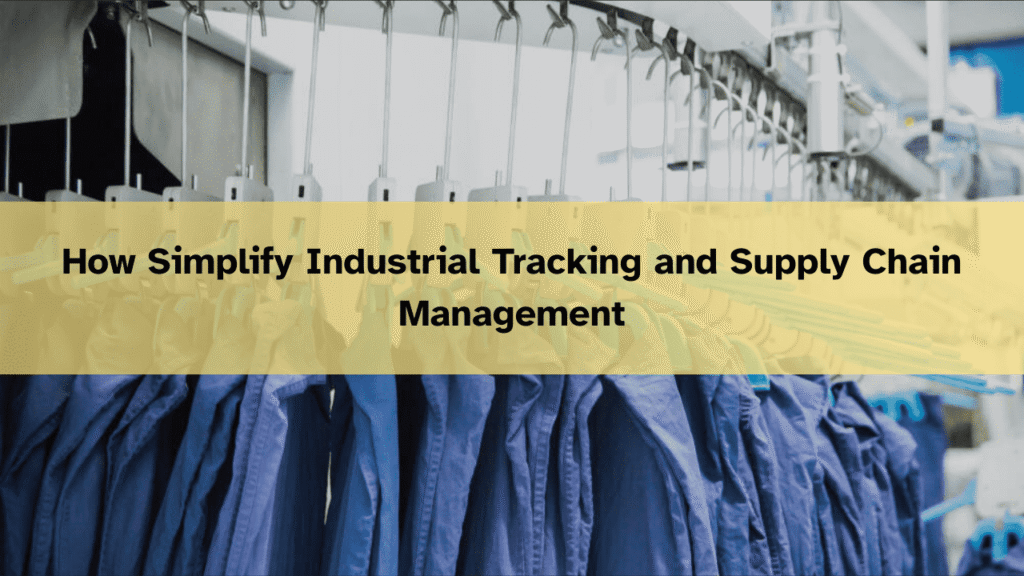RFID Makes Medical Supply Chain “Think”

RFID Makes Medical Supply Chain “Think” RFID Makes Healthcare Supply Chains “Think”: Global Pioneering Cases Revealed and Practical Guide Facebook LinkedIn WhatsApp RFID Makes Healthcare Supply Chains “Think”: Global Pioneering Cases Revealed and Practical Guide In today’s healthcare and dental supply chain sectors, speed and precision determine the baseline of service—digitalization and intelligence have become irreversible industry trends. If you’re still struggling with time-consuming inventory counts, unclear logistics data, and complex high-value consumables management, it’s time to equip your supply chain with the “eye of wisdom” using RFID. This is not just a “tool upgrade,” but a comprehensive innovation in management thinking, operational processes, and industry standards. This article will, in an accessible way, help you understand how RFID disrupts traditions, enables innovation, and through real
How Simplify Industrial Tracking and Supply Chain Management

How Simplify Industrial Tracking and Supply Chain Management RFID Tags: The New Engine of Industrial Intelligence Upgrade — From Cast Part Tracking to End-to-End Supply Chain Transparency Facebook LinkedIn WhatsApp RFID Tags: The New Engine of Industrial Intelligence Upgrade — From Cast Part Tracking to End-to-End Supply Chain Transparency Global manufacturing is undergoing a profound transformation—what we commonly refer to as “Industry 4.0.” Achieving more intelligent, transparent, efficient, and traceable production is now essential for manufacturers seeking to upgrade and compete globally. RFID (Radio Frequency Identification) technology, and particularly the ubiquitous RFID tag, is emerging as a key driving force in this revolution. As a professional company specializing in RFID tag design solution, we value not only the craftsmanship and performance of our products, but also their immense practical value in diverse industrial scenarios. Today, using “tracking of cast part proces
Higher Labor Costs, Higher RFID Adoption Rate?

Higher Labor Costs, Higher RFID Adoption Rate? The Engine of Transformation in a High-Cost Era: RFID’s Logic, Global Cases, and Industry Opportunities — Your Next Operational Upgrade Revolution Starts Now with a Tiny RFID Tag Facebook LinkedIn WhatsApp “People are the most expensive resource.” This is a statement no business leader would disagree with. Yet, what we are witnessing is a major trend: labor costs are continually rising worldwide, management is becoming increasingly complex, while enterprises demand ever-higher levels of process transparency, precise operations, and asset security. How can we break through these challenges and embrace a new, efficient, traceable, and automated way of working? The answer lies in a rapidly growing technology – RFID (Radio Frequency Identification). Through this article, we aim to help global business owners, industrial managers, and innovation leaders truly understand why RFID has become the “new standard”
What drives RFID adoption in crane equipment?

What drives RFID adoption in crane equipment? Empowering the Lifting Equipment Industry with RFID: How Tiger Lifting Sets a New Standard for Smart Manufacturing In today’s rapidly advancing technological era, relying solely on robust products is no longer enough for companies to stand out in the fiercely competitive lifting equipment market. Modern customers demand not just safety and reliability but also intelligence, transparency, and efficiency. As the wave of industrial digitalization sweeps across the globe, more and more lifting equipment manufacturers are proactively embracing this transformation. Radio Frequency Identification (RFID) has become the cornerstone technology driving this change. So, how exactly does RFID empower the lifting equipment industry? Why are leading companies such as Tiger Lifting willing to invest so heavily? As a global RFID solutions provider, we’re here to share with you cutting-edge case studies, technical insights, and real business value, helping
RFID Technology in Railway Transportation

RFID Technology in Railway Transportation With continuous technological advancement, the rapid development of Internet of Things technology has brought revolutionary changes to various industries. As an important component of modern logistics, railway transportation faces increasing demands for efficiency, safety, and intelligence. Against this background, RFID (Radio Frequency Identification) technology, with its efficient and precise automatic identification characteristics, is gradually becoming a key tool for implementing intelligent management in the railway industry. This article will start with the definition and principles of RFID technology, and deeply explore its application scenarios and advantages in the railway sector. Facebook LinkedIn WhatsApp i. Definition and Principles of RFID Technology RFID (Radio Frequency Identification) is an automatic identification technology that uses radio waves to identify and track objects. An RFID system consists of three main components
Unlocking RFID in Daily Life

Unlocking RFID in Daily Life RFID in Everyday Technology: Revolutionizing Everything from Retail to Smart Homes This blog provides a comprehensive introduction to the numerous applications of RFID technology in daily life. From enhancing retail experiences and streamlining logistics, to transforming modes of travel and boosting security, RFID technology is subtly altering our day-to-day existence. Its application in smart homes and healthcare is set to deliver unprecedented experience and convenience. Let’s explore how RFID technology influences and improves our daily lives! Facebook LinkedIn WhatsApp RFID (Radio Frequency Identification) technology uses electromagnetic fields to automatically identify and track tags attached to objects, which have electronic information stored within them. This wireless, automatic data transmission and tracking method has made RFID an indispensable part of various daily technologies and has profoundly changed the way we interact with the world
RFID Tech Boosts Electroplating Efficiency & Safety

RFID Tech Boosts Electroplating Efficiency & Safety Have you ever considered who uses RFID technology in electroplating production lines and why? This technology boosts automation, enhancing the accuracy and reliability of data collection and streamlining the production process. With RFID tags on products and equipment, users can track and monitor item movements throughout the production process.This technology enables real-time data collection, inventory management, and quality control. These advancements lead to cost savings and increased productivity. Numerous industries, including automotive, aerospace, and electronics, have integrated RFID technology into their electroplating production lines to improve their manufacturing processes. More Information Facebook LinkedIn WhatsApp Radio Frequency Identification (RFID) is an advanced wireless communication technology that can identify specific targets and read related data through electromagnetic fields or radio frequencies, a pr
The Rise of AI and RFID in Various Industries

The Increasingly Prominent Role of the Powerful Combination of AI and RFID Across Diverse Industries Explore the future of technology as artificial intelligence and RFID rise across industries. From healthcare to retail, these cutting-edge technologies are revolutionizing how businesses operate. Stay ahead of the curve and increase your organization’s efficiency, accuracy and productivity. Embrace the power of AI and RFID today. More Information Facebook LinkedIn WhatsApp Artificial Intelligence (AI) and Radio Frequency Identification (RFID) are two separate yet equally transformative technologies with unique applications and functionalities across a wide array of sectors, which when combined, can create high-impact solutions. AI, a pioneering technology that simulates and often surpasses human intelligence, includes subsets such as machine learning, deep learning, and natural language processing. This cutting-edge technology equips computer systems with a level of intelligence
Managing Linen and Uniform Inventory Using RFID

Managing Linen and Uniform Inventory Using RFID In today’s society, with the rapid development of technology, industries are exploring how to improve work efficiency and accuracy through technological means. A common challenge faced by hotels, hospitals, the military, fire departments, factories, and professional laundry companies is how to effectively manage thousands of work clothes and linens. These management tasks include handover, washing, ironing, sorting, and storage. Especially in tracking the washing process of each piece of linen, the number of washes, inventory status, and effective classification, there are huge challenges. Traditional laundry management methods have several problems: The manual registration of laundry tasks is complex, difficult to query, and inefficient. Due to concerns about cross-infection, some unwashed linen cannot be counted, which can easily lead to disputes about mismatched numbers. It’s impossible to accurately monitor each link in t
